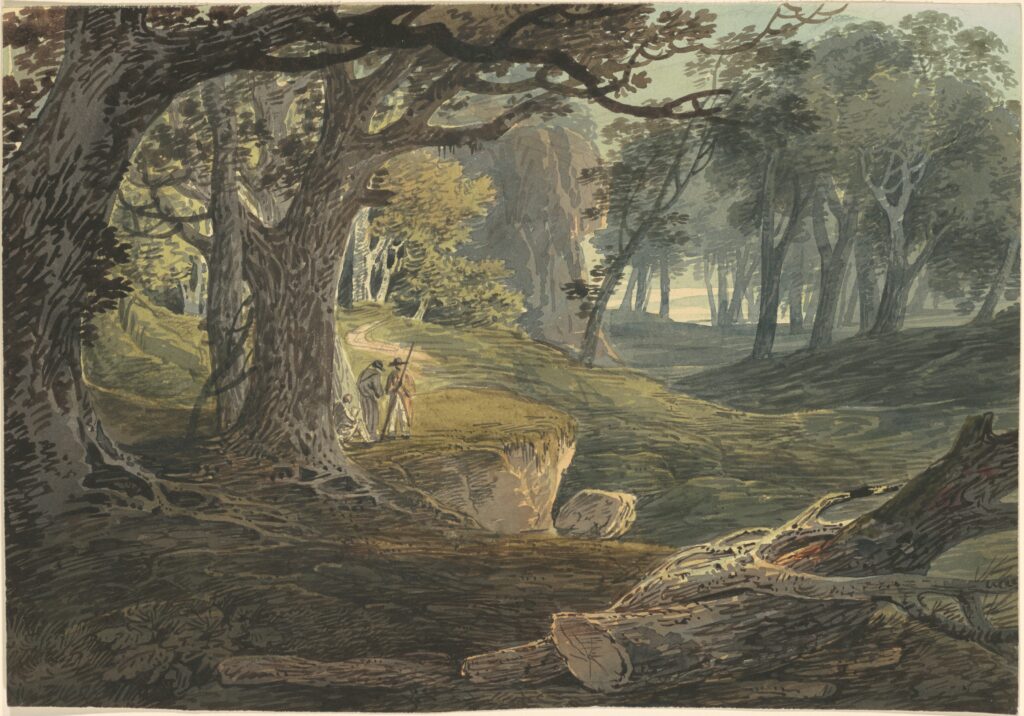To mark World Forestry Day on 21st March our conservation team have given us this update on their work with trees, woodland, and advising the Forestry Commission.
We are often consulted on works to trees within designed landscapes, most recently within the Grade-II listed landscape of Middle Temple, London. The GT and the London Gardens Trust supported proposals to prune mature Black Mulberry trees within the conservation area. This will maintain them and ensure they remain in the best possible form for future generations.
Tree planting to screen development
As well as small-scale work to trees, planning consultations frequently concern tree screening for developments just outside designed landscapes. Tree screens can minimise the intrusion of views and light from developments into the designed landscape. However, their effectiveness depends on the seasonal density of tree coverage, the health of the trees themselves, and how well they are managed and maintained.
Another recent consultation was about a major residential development on the boundary of Wrest Park in Bedfordshire. In our response to we commented on how the existing trees in the landscape would serve as a tree screen. From certain angles we were satisfied that the proposals did not affect views from within the gardens. However, the thinner, deciduous woodland that bordered the proposals to the south provided much less of a visual barrier. Our response was informed by the Bedfordshire Gardens Trust’s knowledge of the site. This highlights how invaluable the local knowledge of County Gardens Trusts can be in assessing the effect of woodland in minimising the impact of development.
Forestry Commission consultations
Over the last year we have also been working closely with the Forestry Commission. We have advised them on felling licence applications, woodland creation schemes, and management plans for woodlands within historic designed landscapes. These consultations can range from small areas of woodland to acres across a site. At Well Hall in Lincolnshire, we were consulted on both ash tree thinning and wider clear-felling to allow for native species to be planted. We had no concern with these particular changes, but our response highlighted the historical significance of woodland on the site. The dense woodland provides a backdrop to the eighteenth-century St Margaret’s church that lies beyond the lake. The trees thus contribute to the vista’s sense of scale. Any works should therefore avoid too much thinning, as this could dramatically alter this backdrop to a historic landscape.
Protecting the heritage of woodland
Ensuring that any tree works do not harm the important heritage of trees and woodland within the landscape is a vital element in all our responses. We were sent a felling licence consultation for Newburgh Priory. This showed how the form of a designed landscape is still relevant to how its woodland is managed today. Using maps dating from 1722 and 1744, we identified that some of the thinning and replanting would be within an area known as The Stripe, which formed both a tree avenue and ride leading to a clearing with a temple.
To preserve this avenue, we advised the applicants to avoid planting too densely, to keep the sense of a spaced avenue of trees. We also recommended leaving the stumps in place, rather than uprooting them, to minimise any damage to the earthworks of the avenue. This helps to conserve the historic features of the landscape while accommodating the need for both tree-felling and restocking.
Finally, the visual impact of any tree works must take the trees themselves into consideration. The picturesque planting at Arlington Court relies on the contrast of colour and texture between broadleaf and coniferous trees. We therefore advised the Forestry Commission on how this could be preserved while still doing the required works.
Our work with the Forestry Commission has shown just how much detailed historical research, local knowledge, and impact assessment is needed to respond effectively to the new consultations we are working through.
Daniel Bowles
Assistant Conservation Casework Manager




